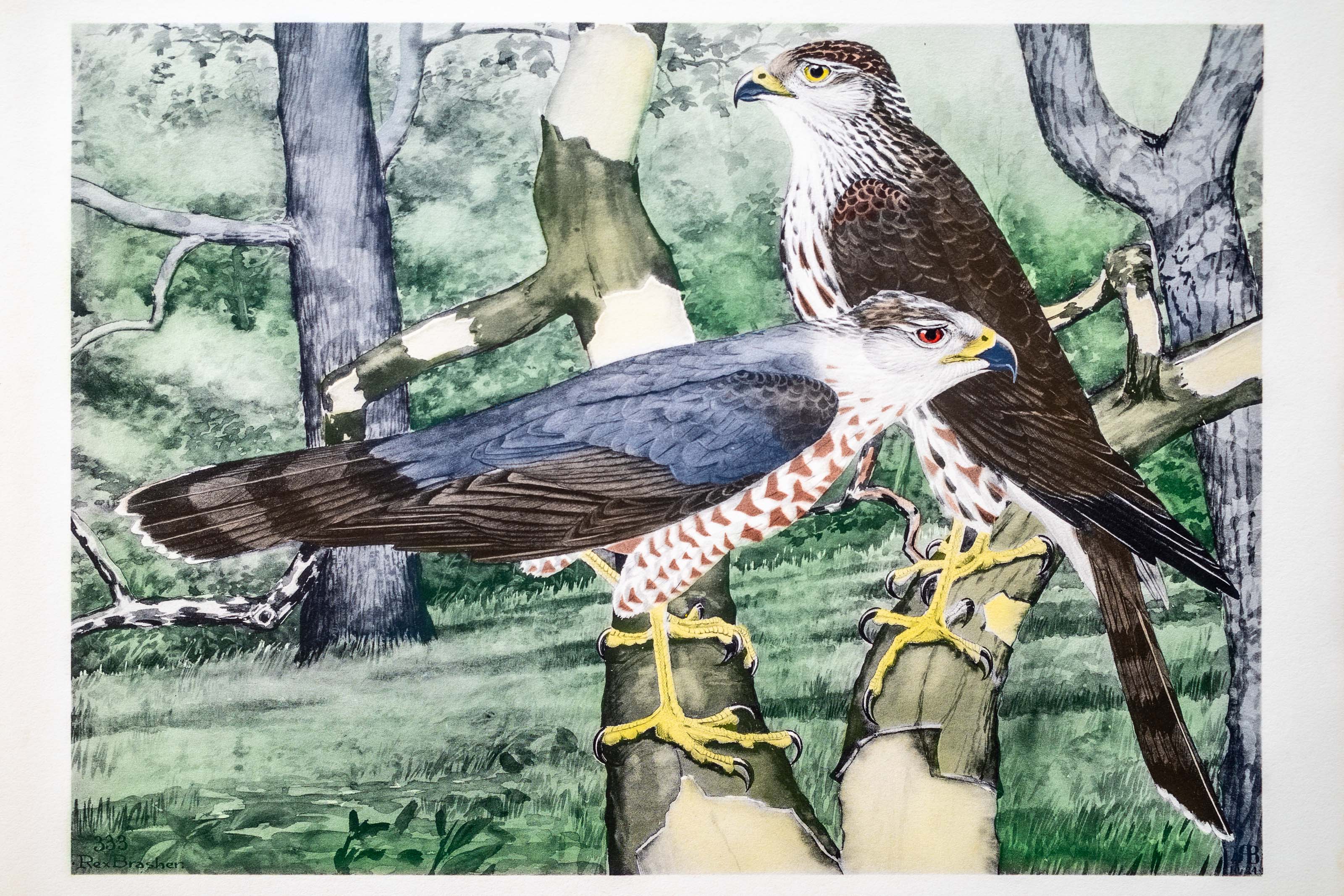
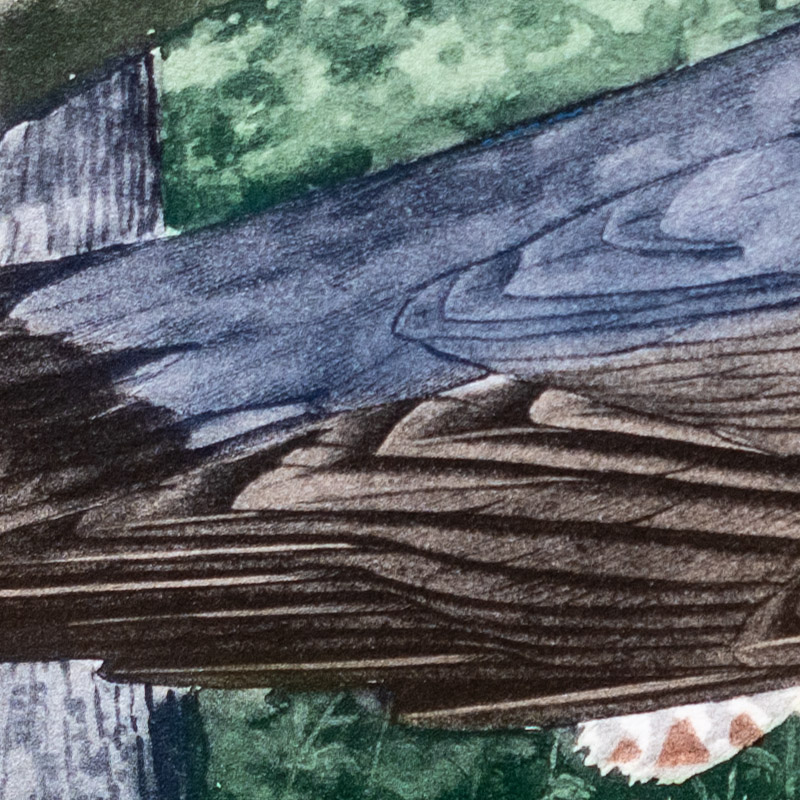
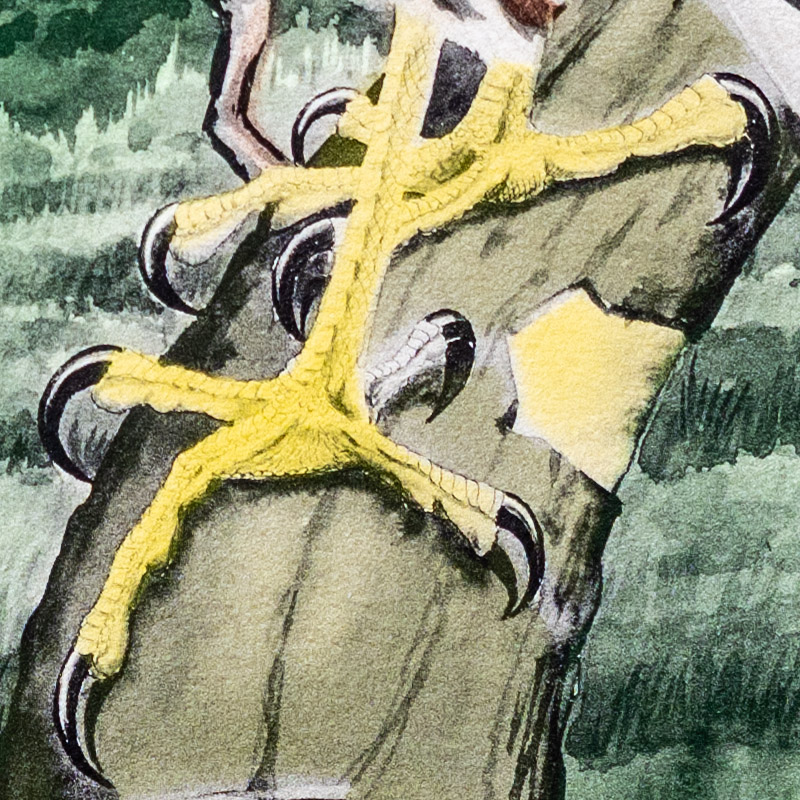
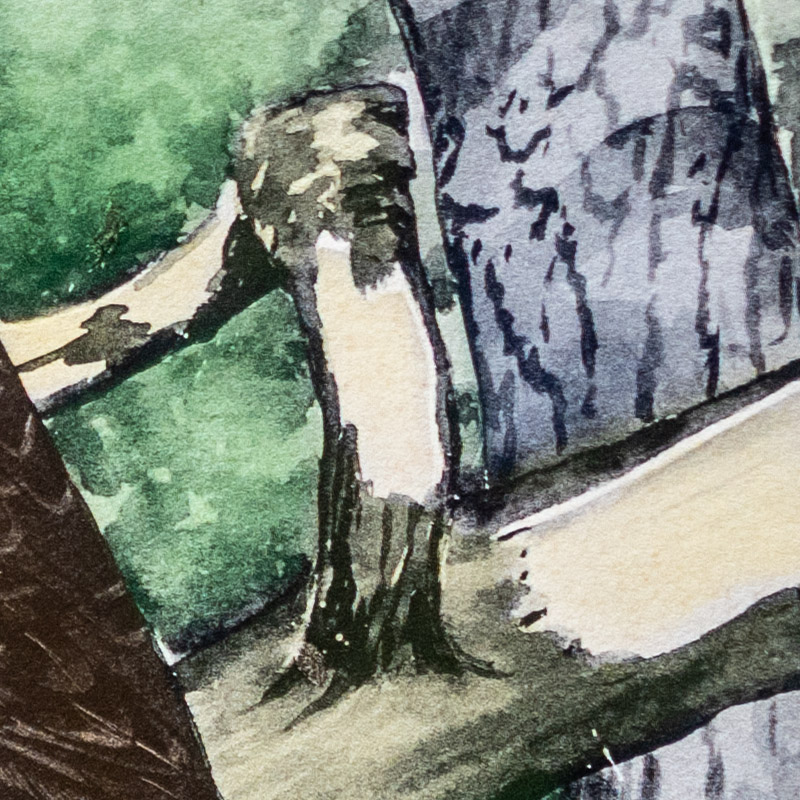
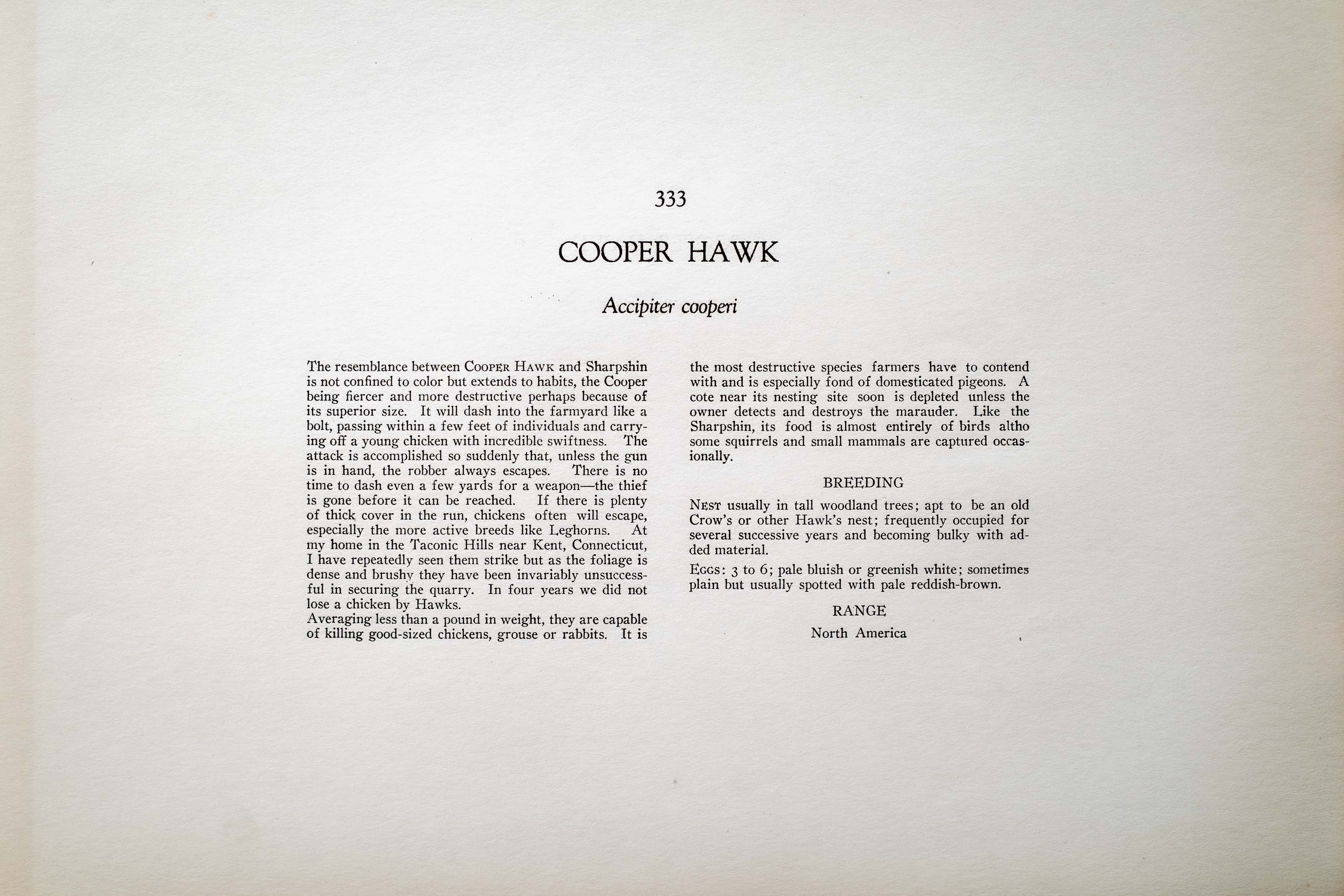

Unknown
1930
5
333
A team of dedicated board members, volunteers, and student interns has published every page in Volume 9. This volume includes 360 images of paintings and lyrical descriptions of birds, now available online for everyone to enjoy anywhere in the world. This is a monumental task. Each volume requires approximately 400 hours to photograph, edit, transcribe, catalog, and publish online. We need your support to complete this work.
If you're tech-savvy, have a good eye, are meticulous with details, and love structured data, please consider volunteering by emailing us at hello@rexbrasher.org.
We encourage all bird lovers and supporters to consider a monetary donation to support our mission to make Rex's work available for everyone. You can provide a one-time or recurring donation online.
The resemblance between COOPER HAWK and Sharpshin is not confined to color but extends to habits, the Cooper being fiercer and more destructive perhaps because of its superior size. It will dash into the farmyard like a bolt, passing within a few feet of individuals and carrying off a young chicken with incredible swiftness. The attack is accomplished so suddenly that, unless the gun is in hand, the robber always escapes. There is no time to dash even a few yards for a weapon — the thief is gone before it can be reached. If there is plenty of thick cover in the run, chickens often will escape, especially the more active breeds like Leghorns. At my home in the Taconic Hills near Kent, Connecticut, I have repeatedly seen them strike but as the foliage is dense and brushy they have been invariably unsuccessful in securing the quarry. In four years we did not lose a chicken by Hawks.
Averaging less than a pound in weight, they are capable of killing good-sized chickens, grouse or rabbits. It is the most destructive species farmers have to contend with and is especially fond of domesticated pigeons. A cote near its nesting site soon is depleted unless the owner detects and destroys the marauder. Like the Sharpshin, its food is almost entirely of birds altho some squirrels and small mammals are captured occasionally.
NEST: usually in tall woodland trees; apt to be an old Crow's or other Hawk's nest; frequently occupied for several successive years and becoming bulky with added material.
EGGS: 3 to 6; pale bluish or greenish white; sometimes plain but usually spotted with pale reddish-brown.
North America.